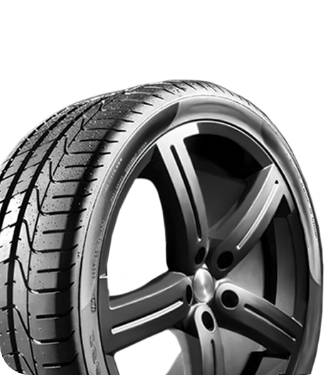

What Is Tire Sealant and What Is It Used For?
News & Events |There are many ways to fix a flat or punctured tire, and one of the easiest and most effective is with tire sealant. Many of us have faced the frustration of a flat tire at the most inconvenient time. Wouldn’t it be great to have a simple solution that can save time, money, and energy?
That’s where tire sealants come into play. If you’re interested in learning more about tire sealants, we’ve got you covered. Our guide below will cover what tire sealant is, what it’s used for, and how to use it to fix your flat tire correctly.
A Basic Tire Sealant Overview
Tire sealant is a liquid solution that car owners can insert into the tire to quickly seal punctures. This substance is typically a blend of polymers and fibers that coagulate to form a plug over punctures.
The primary function of tire sealant is straightforward—to prevent air loss from punctures. It’s much easier and less time-consuming to fix a puncture with tire sealant than it is to change and remove a flat tire. Whether you’re driving on city roads or off-roading in rough terrain, having tire sealant ensures you don’t get stuck in the middle of nowhere with a deflated tire.
Types of Tire Sealants
Not every tire sealant is the same. They are generally broken into two main categories: temporary and permanent sealants.
Temporary Sealants
Temporary sealant is the most common type of tire sealant, typically found in emergency repair kits. These sealants provide a quick fix by sealing the tire temporarily until the driver can apply a more permanent solution, like swapping out the punctured tire for a new one. While they’re not a permanent solution to tire breaches, temporary tire sealants are excellent for emergencies where immediate repairs are necessary.
Permanent Sealants
While most sealants are temporary fixes, some sealants are permanent solutions. Permanent sealants are part of a more proactive approach as you apply them before a puncture occurs.
Tire shops and mechanics add permanent sealants to tires during installation to give them an added layer of long-lasting protection against punctures. The next time you get new tires, ask about permanent sealant protection to give your tires a stronger shield against dangerous punctures.
Sealants Provide Proactive and Reactive Tire Protection
Both temporary and permanent tire sealants provide advantages for car owners who want proactive protection and quick fixes against tire punctures. For drivers, getting both is an investment against future tire punctures and fast remedies when they do occur.

How Tire Sealant Works
We’ve described what tire sealant is and what it’s used for, but how does it work? The science behind tire sealants is fascinating and practical.
Temporary sealants are introduced into the valve stem, and the internal air pressure of the tire forces it into the breach where the sealant forms a protective layer. Permanent tire sealant basically works the same way, but it’s already in the tires before the puncture, so it acts quickly and chemically bonds with the tire material for a fast and long-lasting seal.
Advantages of Using Tire Sealant
There are many reasons why drivers should consider having an emergency tire sealant kit in their car for flats. It’s often a better solution than swapping out the punctured tire for a spare.
Safer
Using permanent tire sealant greatly improves safety by reducing the chances of sudden tire deflation, which can be dangerous, especially at high speeds. Temporary tire sealants are also safer because they’re quicker than changing a tire by hand, ensuring you spend less time stranded or dangerously exposed on the side of the road.
Minimized Downtime
Applying tire sealant minimizes downtime. Instead of waiting for roadside assistance, changing the tire yourself, or struggling to find a repair shop, a DIY application of tire sealant allows you to continue your journey almost immediately. This convenience saves time and reduces stress during unexpected tire issues.
Extended Tire Life
Tire sealants can extend the life of your tires by preventing minor punctures from becoming major issues. This enhances the durability of your tires and saves money in the long run by avoiding frequent replacements.
Applications of Tire Sealant
Tire sealants aren’t just for cars. They have a broad range of applications, making them a versatile solution across different types of vehicles.
Bicycles often use tire sealants to provide quick fixes during long rides, ensuring cyclists can pedal on without interruption. Off-road vehicles, which are more prone to tire damage due to rough terrains, benefit significantly from the added protection of tire sealants. Even commercial vehicles, such as trucks and buses, use industrial-grade sealants to maintain tire integrity over long hauls.
Step-by-Step Guide to Applying Tire Sealant
Now that we’ve explained the gist of tire sealants, let’s go over how to apply the sealant to a punctured tire in emergencies. The process is straightforward, and most tire sealant kits also include precise instructions on how to effectively apply sealant.

Locate the Puncture
Firstly, you need to identify the puncture on your tire. If you struggle to find it, you can create a soap-and-water solution, and apply it to the tire surface. Look for where bubbles are forming, and you’ll see where air is escaping the tire.
Prepare the Sealant
Depending on what tire sealant repair kit you have, preparing the sealant may require certain steps. Generally, you’ll just need to pick the applicator that fits onto your tire’s valve stem and shake the bottle to prepare the sealant.
Inject the Sealant
With the sealant bottle ready, it’s time to inject it into the tire. Attach the nozzle of the bottle to the valve stem of the tire, and squeeze to inject the solution. Read the bottle’s instructions for how long to squeeze the bottle, but it should generally only take a few seconds.
Inflate the Tire
Now, you’ve sealed off the puncture of the tire, but it’s still flat! Using an air compressor, inflate your tire back to its recommended PSI range. You don’t have to wait after injecting the sealant, as it should work almost instantly.
Distribute the Sealant
With your tire sealed and inflated, it’s safe to drive again. After injection and inflation, drive for a few miles to evenly distribute the sealant through the tire and ensure the puncture is sufficiently sealed. Remember, though, that these are generally temporary fixes, and you should consider replacing the compromised tire with a new one immediately.
Find Tire Sealants and More at RNR Tire Express
At RNR Tire Express, we’ve got everything your car and tires need. Whether you’re looking for tires in Clovis or repair and maintenance tools like sealants and cleaning supplies, we can help! View our inventory of tires, supplies, and equipment online, or schedule an appointment with one of our tire experts today.





